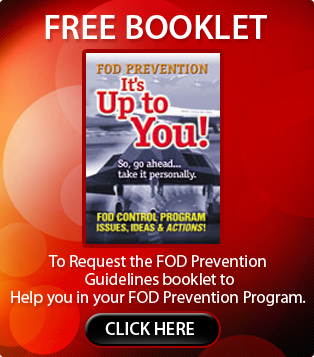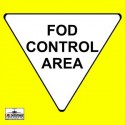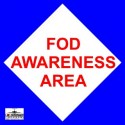WHY STERILIZE?
My wife told me a rather scary story once about a visit to an oral surgeon’s office in another state. She was told to get a root canal by her regular dentist and so came in for a consult. The receptionist took her go back to the examination room and after waiting a few minutes, Margaret decided to have look around. When she did, she was rather surprised to say the least. There before her was a room that hadn’t been “sterilized”. Margaret could see that it still contained dirty instruments, blood-spattered equipment and general disarray. It was about then that she remembered that she had urgent business elsewhere and had to “re-schedule”.
When you look at a toolbox or kit, what do you see? Is it a shining array of tools decked out in the latest kind of box? Take a closer look. Maybe this box really is what it appears to be but then again, perhaps it’s not.
 Tool drawers and kit trays are set up for several reasons. First of all, they contain the tools the technician needs to get the job done: obvious. They also are set up in such a way as to save the worker the maximum amount of time because, face it, time is money. But there has to be a third reason. It’s the third reason that really counts here: Control.
Tool drawers and kit trays are set up for several reasons. First of all, they contain the tools the technician needs to get the job done: obvious. They also are set up in such a way as to save the worker the maximum amount of time because, face it, time is money. But there has to be a third reason. It’s the third reason that really counts here: Control.
Control counts for several things. Tool inventory control means tools will not be lost which stands for company savings. Positive control, i.e. knowing where the tool is at all times and the condition that tool is in also stands for FOD prevention, which is what the rest of this chapter is all about.
I want you to think about the work you do on or around aircraft as your operating room. If you were having surgery, what would you like to see coming into the room while flat on your back on a gurney? How about clean uniforms, clean room, clean smell, positive, focused personnel, minimum tools, leadership and follower-ship?
How does that relate to your work? Maybe you still don’t see the connection. Ok, how about this one? You take your family out to dinner at a restaurant you haven’t been to before. What do you want to see there? How about clean uniforms, a positive attitude, clean tables, clean kitchen, clean smell, etc. – Pretty much the same things. These folks are strangers but they are assembling the food that you are going to put into your mouth!
Check into a hotel room. The first task most of us are going to accomplish is the ‘clean check’: Switch on the light. Look for clean. Clean everything! Beds, walls, bathroom, lights working, floor. Even a clipped toenail from the previous night’s guests is going to freak some of us out! Yet we go to work on Monday and leave the Clean Culture at the door!
REAL BASIC SURGERY
Having had at least eight visits to the O.R., seven of which I was administered a general anesthetic, I have noticed this much:
1) ESTABLISHED PROCEDURES: Now I haven’t seen these in the O.R. but I am pretty sure these people were formally trained and there is a whole lot of good policy-type stuff out there on how to do what it is they are about to do on me and it was all decided way before I ever arrived. (Whew!)
2) PRE-ASSEMBLED TOOLS AND PARTS: The surgical instruments are pre-assembled, sealed, sterilized and basicly prep’d.
3) THE RIGHT TOOLS FOR THE JOB: The room is prep’d and wiped down with disinfectant and supplied with things like surgical trays, sponges, syringes, drapes, towels and anesthetic.
4) THE TEAM ASSEMBLES: The operating team is briefed ahead of time so they’re prep’d. As the time draws near to cut, they assemble themselves, put on a lot of prep’d garments and avoid contact with germs and stuff. Each member of the team knows the job well and exactly what the procedure is to be. They are all ready to go…
5) THE PATIENT IS BROUGHT IN AND THE WORK REALLY BEGINS: The patient is prep’d, placed on a restricted diet and briefed the day before on the procedure. A few hours before he or she is pre-medicated. Then the skin is cleansed and shaved (prep’d some more folks). When the time finally arrives the patient arrives in a frigid little gown that is probably too short and tied behind in only a couple of spots without anything else to wear except sometimes socks (they’re really great), wheeled into surgery and greeted by the team surrounded by stainless steel, alcohol, bright lights, and masked faces, all bustling about. The staff chats with you a bit. The doc comes in and then, in my case, I lose both audio and video until I wake up in Recovery: Drugged, confused and somewhat irascible as I try to figure out where I am and what just rocked my world.
Then comes health and healing, sometimes lasting for more than a year and you go on with your life… Think about the surgical philosophy involved here. Each step in the task is a control measure. Four measures of control in-place before they actually touch the patient: 80% prep work: Prep the patient, the operating room, the tools, the team. Prep. Prep. Prep. Control. Control. Control. Do it right every time and they achieve the desired results of aiding the patient to a full recovery.
REAL BASIC TOOL AND PARTS CONTROL
Working in the field of aviation is no different in concept than that of a hospital.
ESTABLISHED PROCEDURES: All work procedures on aircraft must be standardized. This means everyone doing the job will do it the same way, every time. At Air Force level, guidance is given of a general nature. This is coupled with the corporate guidance for the aircraft or aircraft system involved. Localized procedures are added to ensure that individual processes involving tool control are addressed for that particular installation. Corporations are no different. Top-down leadership directs maintenance practices all the way to the technician. These include procedures for security, control and accountability of all tools, parts and equipment -even to include expendable items such as rags, caps and safety wire. Losing a part or a tool is established policy too. Just remember, do what the book says and it will turn out all right in the end. If you find a flaw, you owe it to your management to immediately bring this to their attention.
PRE-ASSEMBLED TOOLS AND PARTS: As in routine repetitive surgery, your tool or parts kit can be set up ahead of time. In these cases, nothing extra need be present. Assembly trays should be “pre-kitted”, meaning that the items in the tray are counted out ahead of time and arranged or assembled so that they are easy to pick up. These kit trays can also be used for routine disassembly areas too. FOD bags should be at your workstation so it is all contained during the job in a process known as “Clean-As-You-Go, which means just that.
THE RIGHT TOOLS FOR THE JOB: Ensure the parts tray or consolidated tool kit (CTK) is clean and every tool is in good functional order. CTKs should be arranged to provide a quick inventory and accountability of tools. Each tool you use should be identified so that if it is lost anyone finding it will know exactly where it belongs. Nothing should touch an aircraft or aircraft part that isn’t properly checked out and marked, including test equipment and accessories. A widely-accepted method of tool inventory is to “shadow” the tools. Tool shadowing is done several ways but a preferred method is to use two thin layers of foam. The top layer is one solid color and each tool shape is cut all the way through it. This layer is firmly glued to a bottom layer of a contrasting color. What you get is a well-shadowed tool any time it is removed. When tools are added or the drawer or tray they are in becomes too crowded it’s time to re-foam the drawer, change the design or delete some of the other tools in there you may not be using. Each CTK should contain a master inventory list (MIL) and a removed tool form to tell the user the status and location of every tool. Consumable items mixed with tools are permissible provided they are itemized on the MIL. No personal tools should be allowed at all. Larger “common” tool boxes can cut down the need for smaller hand-carried items. Multiple CTKs or trays that will be used for the same purpose should be standardized to maximize efficiency and ensure control. Speaking of control; technicians should have a go-between person handing them their tools and a tracking system using bar codes or chits established to ensure positive control is maintained at all times.
THE TEAM ASSEMBLES: Technicians can’t arrive at the work site unless they have the proper procedural guidance an on-the-job training. They have to be wearing the right clothing, have no loose change or stuff in their pockets and in certain places, such as aircraft engines, have pocketless, buttonless bunny suits. They should have the time to thoroughly check their tools and equipment over ands receive a good “pass-on” before starting to work. The smart guys and gals touch and lift tools in their CTK to see what else is in the box before they accept it. (The tool room folks should do this too when the tools and parts come back.) Now they’re ready to begin…
THE PATIENT IS BROUGHT IN AND THE WORK REALLY BEGINS: The work area may have to be cleaned and prep’d. Usually there are panels to open along tools and equipment to assemble. Finally you get to do what you are trained to do. Whatever it is, stay the course, stay in the procedures and clean-as-you-go. When its over your aircraft should be on its way to flight.
CONCLUSION:
Control the process from beginning to end.
Take a good look at your tools and equipment. Operating rooms and surgical teams have perfected a method of work that is not unlike what we do in aviation. It’s 80% prep work just to get to the point of making or repairing an aircraft component. Try and skip the prep work and you’ll have problems for sure. As in surgery, there’s no room for short-cuts.
Take care,
Master Sergeant Steven Ball
5th Bomb Wing FOD Monitor, Minot AFB North Dakota



